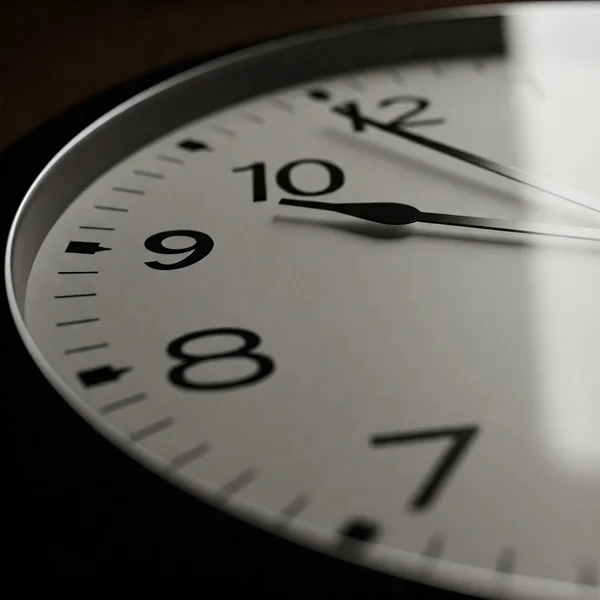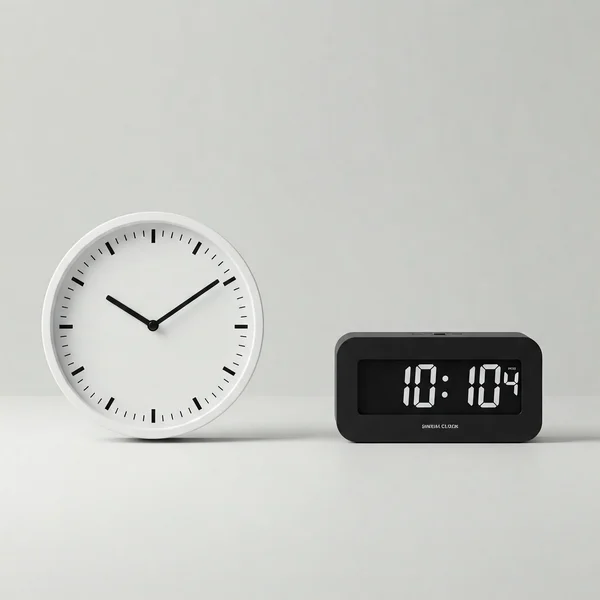Analog vs. Digital Clocks: Key Differences & Why They Matter
Comparing Analog & Digital Clocks: Features, Pros, Cons & Cognitive Value
In today's world, we're surrounded by ways to tell time. From the watch on your wrist to the phone in your pocket, time displays are everywhere. Two primary formats dominate: the classic analog clock with its moving hands and the straightforward digital clock with its numerals. But what is the difference between an analog and digital clock, and does it truly matter which one we use beyond simple preference? Understanding these differences can offer insights into how we perceive time and even how our cognitive skills develop – aspects crucial for learning. Sometimes, persistent challenges in areas like time perception might warrant exploring cognitive abilities further, and resources exist to help understand these skills, such as assessments focused on numerical cognition like the dyscalculia test. Let's dive into the comparison.
What is an Analog Clock? Defining the Classic Time Teller
What is an analog clock? It's the traditional clock face most of us picture, featuring hands that sweep across a dial marked with hours and often minutes.
The Face, Hands, and Markings
An analog clock typically has a circular face numbered 1 through 12. It uses at least two hands: a shorter hour hand and a longer minute hand. Many also include a third, thinner hand for seconds. The hands move continuously (or in discrete steps) around the dial, indicating the passage of time through their position relative to the numbers and tick marks. (Self-correction: Could link "spatial reasoning" here to another relevant internal article if one existed).

Understanding the Analog Clock Meaning
The term "analog" here refers to the way the clock displays time as an analogy of time's passage. The continuous movement of the hands across the spatial layout of the dial represents the continuous flow of time. You visually interpret the angle and position of the hands to understand the time.
Understanding the Digital Clock: Precision in Numerals
A digital clock, in contrast, displays the time directly using numerals (e.g., 10:30). How does a digital clock work? It presents the exact hour and minutes, and sometimes seconds, in a numerical format.
The Basics of Digital Display
Digital clocks eliminate the need for interpretation of hand positions. They provide an immediate, precise reading. This format is common on phones, computers, microwaves, and many modern watches.
Common Power Sources and Formats
Digital clocks are typically electronic, powered by batteries or mains electricity. They often offer options to display time in 12-hour (AM/PM) or 24-hour formats.
The Core Showdown: Key Differences Between Analog and Digital Clocks

While both tell time, the difference between analog and digital clock displays impacts how we interact with time information. Let's break down the key distinctions.
Display & Readability: Visual Space vs. Direct Digits
Analog clocks require interpretation. You need to understand what each hand represents and how the markings relate to minutes and hours. This involves spatial reasoning. Digital clocks offer instant readability – the numbers tell you the time directly, requiring less interpretation but potentially less engagement with the concept of time flow. Many find telling time easier initially on a digital display.
Information Conveyed: Sense of Time Flow vs. Exact Moment
An analog time display inherently shows time remaining until the next hour or time elapsed since the last. The spatial relationship between the hands gives a visual sense of duration and progression. Digital clocks excel at showing the precise current moment but offer less intuitive visual information about time intervals. (Self-correction: A link to an article on "Time Perception" or "Time Management Skills" could fit here).
How They Work: Mechanics/Quartz vs. Electronic Circuits
Traditional analog clocks used mechanical movements, while modern ones often use quartz movements triggered by battery power. Digital clocks rely purely on electronic circuits and displays like LCD or LED. (Self-correction: An external link explaining quartz movements could be added for curious readers).
Typical Features and Functions Compared
Both types can have alarms, but digital clocks often integrate more complex features like stopwatches, timers, multiple time zones, and date displays more easily due to their electronic nature.
Weighing the Pros and Cons: Analog Clock Benefits vs. Digital Advantages
Why are analog clocks better in some situations, and where do digital clocks shine? There are distinct pros and cons to each.
Why Choose an Analog Clock? Exploring the Benefits
The analog clock benefits often relate to cognitive aspects. They can help develop:
- Spatial reasoning: Understanding the hands' positions relative to each other and the dial.
- Estimation skills: Quickly glancing to get an approximate time or sense of how much time is left.
- Concept of time flow: Visually representing time passing and cycles (like hours in a day). Many educators prefer using a traditional clock for teaching time-telling due to these benefits. (Self-correction: Could link to educational resources or studies supporting these cognitive benefits).
Potential Downsides of Using Analog Time
The main disadvantage is the learning curve. Reading an analog clock accurately, especially to the minute, requires practice and understanding. Some individuals find interpreting the hands consistently challenging, which might sometimes relate to underlying learning patterns.
The Strengths of Digital Timekeeping
Digital clocks offer unparalleled precision and ease of reading for most people. They are unambiguous and quick to interpret, making them efficient for quick time checks.
Where Digital Clocks Might Fall Short
They provide less intuitive information about time duration or the "shape" of the day. It's harder to visually grasp "quarter past" or "ten minutes to" the hour without mental calculation.
Why Analog Clocks Matter for Cognitive Development

Is an analog clock better for the brain? The answer might lie in the cognitive skills it helps exercise. Using an analog clock isn't just about knowing the time; it engages the brain in ways a digital display doesn't. This interaction highlights why understanding cognitive development clock connections is valuable.
Enhancing Spatial Reasoning Skills with Analog Time
Interpreting the angles and positions of clock hands is fundamentally a spatial task. Regularly reading an analog clock can help strengthen visual-spatial processing skills, which are important in many areas, including mathematics and navigation.
Analog Clocks and Learning to Estimate Time
The visual layout makes it easier to estimate time intervals. You can see how much of the hour is left before an event, fostering better time management and estimation abilities compared to just seeing static numbers change.
The Connection to Foundational Math Concepts
Analog clocks visually represent concepts like fractions (quarter past, half past), angles, and counting in multiples (by 5s for minutes). This visual reinforcement can be beneficial for grasping these basic math concepts. Building these foundational skills is crucial. When significant difficulties arise in these areas, it can be helpful to understand potential underlying factors. For those interested in exploring assessments related to number sense and associated skills, learning about cognitive screeners might provide useful insights.
Analog vs Digital - It's More Than Just Preference
The analog vs digital clock debate isn't just about aesthetics or tradition. While digital clocks offer speed and precision, analog clocks provide a unique visual representation of time that can aid in developing important cognitive skills like spatial reasoning and time estimation. The best choice often depends on the context and individual needs. Understanding the strengths of each helps us appreciate why the classic clock face still holds value in our digital age.
Which clock type do you find more intuitive? Does the cognitive aspect surprise you? Share your thoughts below! If challenges with time concepts or related math skills are a concern, resources like the Dyscalculia Test aim to offer clarity.
Frequently Asked Questions about Analog and Digital Clocks
Are analog clocks more or less accurate than digital clocks?
Accuracy depends more on the clock's internal mechanism (quartz or mechanical quality) than the display type. A high-quality quartz analog clock can be just as accurate as a typical digital clock. Atomic clocks, often digital, offer the highest accuracy. (Self-correction: An external link to NIST or similar about clock accuracy could be useful).
Is it true analog clocks are becoming obsolete?
While digital displays are ubiquitous, analog clocks are far from obsolete. They remain popular for watches and wall clocks due to aesthetics, tradition, and the cognitive benefits discussed. Are analog clocks obsolete? Not yet, and perhaps never entirely, due to their unique visual language for time.
What makes reading an analog clock harder for some people?
Reading an analog clock requires integrating information from multiple hands, understanding spatial relationships, converting positions to numbers (minutes), and sometimes dealing with Roman numerals or unmarked faces. Persistent difficulty can sometimes be linked to challenges in spatial reasoning, visual processing, or number sequence processing. Understanding these specific cognitive areas is something assessments aim to address. If you're exploring tools for this purpose, you might investigate cognitive screening options.
Can a clock be both analog and digital?
Yes! Some clocks and watches feature hybrid displays, showing both analog hands and a digital numerical readout, offering the benefits of both formats.